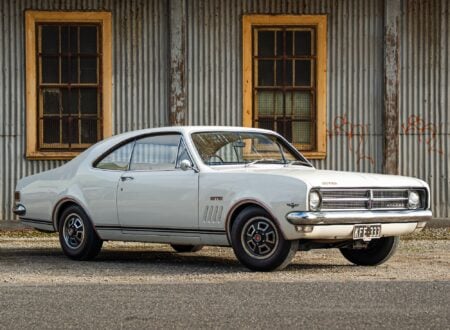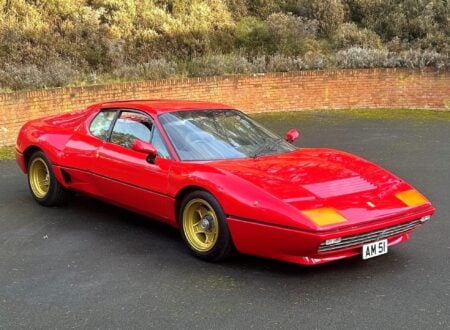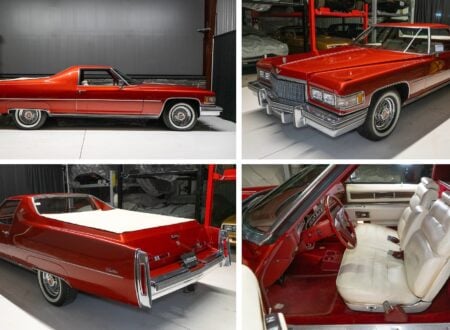This 1988 Land Rover Defender 90 has been subjected to an electric vehicle conversion, for the not-insignificant price of £43,000 or approximately $54,700 USD. The work was carried out in 2021 by the specialists at London Electric Cars (LEC).
When classic vehicles like the Defender are converted to electric there will always be those who decry the conversion as heresy. I tend to think the conversions are fine, often interesting, and so long as no truly rare or sacred vehicles are modified I don’t see the harm.
Fast Facts – A 100% Electric Land Rover Defender 90
- The vehicle that would become the Land Rover Defender debuted in 1983. The model series was initially known as the Land Rover Ninety, Land Rover One Ten, and Land Rover 127 with the numbers closely referencing the wheelbase length in inches.
- When the Land Rover Discovery debuted in 1989 it was felt that the Ninety/One Ten series needed a more permanent name, and Defender was chosen – possibly because of the extensive use of the vehicle by militaries around the world.
- The Defender was based on the earlier Series Land Rovers that had entered production in 1948. Defenders would be built right the way through until 2016, they were then replaced with the “new” Defender in 2020.
- The vehicle you see in this article is a 1988 Land Rover Defender finished in Masai Red with a White roof and black steel wheels. It’s been given an electric conversion by London Electric Cars and it’s now powered by a Nissan Leaf motor and an NCM battery array totaling 30kWh.
- The vehicle is now exempt from congestion, ULEZ, and Road Tax charges and it will enjoy free residents’ parking in many London boroughs. It has a current MOT until March of 2025 and it’s being offered for sale with a guide price starting at £20,000 or approximately $25,500 USD.
London Electric Cars
London Electric Cars was founded in 2017 with a singular goal – to convert classic cars to electric and avoid the significant waste of internal combustion cars being scrapped and replaced with new electric vehicles.
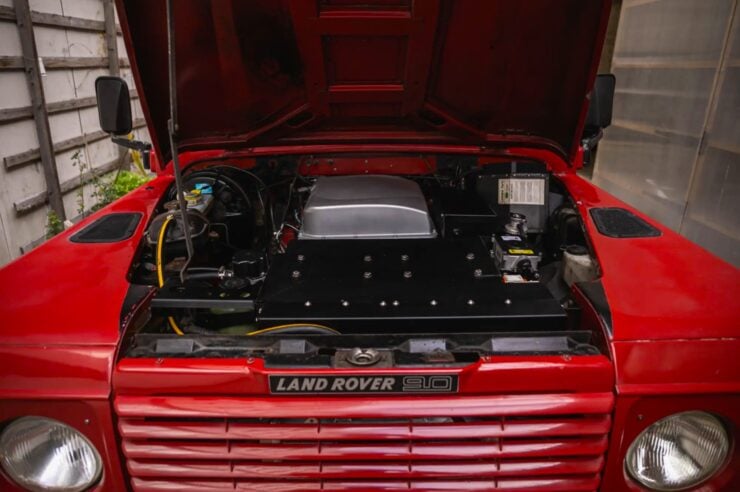

The company has developed a series of kits that allow the simple conversion of common classic cars from petrol to electric, including Land Rovers, classic Minis, and VW Beetles, Type 2 Vans, and Karmann Ghias. The other option is a special conversion, this involves the client bringing in their classic and having a bespoke conversion done on the premises.
The Land Rover conversion kits, which are the most relevant for the sake of this article, are available for the Series 1, 2, and 3 Land Rovers as well as the Defender and for wheelbase lengths including 90 and 110.
When specifying your kit you can choose from a variety of battery pack sizes giving range options from 40 to 200 miles. It’s also possible to choose between 3.3kW, 6.6kW, and rapid charging options as well, and impressively, all the original gauges work and the heater controls remain functional.
The conversion process typically takes around three months, though special one-off projects can take 12 months or more. The kits are not yet available for the public to buy and install themselves, though this is something the team at LEC is working on.
The cost of a conversion tends to run somewhere from £30,000 to £40,000, though it can cost more if it’s a unique job or their first time working on a specific model. A large part of the cost comes from the batteries, which as anyone in the industry will tell you typically make up a large part of the cost of any electric vehicle.
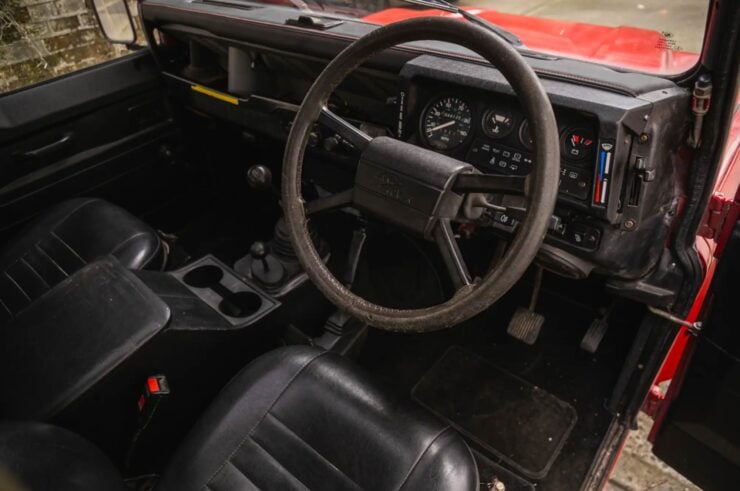

The benefits to converting to electric can be significant, particularly in the UK and other countries that offer preferential treatment for EVs. LEC notes that their conversions are exempt from congestion, ULEZ, and Road Tax charges and it will enjoy free residents’ parking in many London boroughs.
The 100% Electric Defender 90 Shown Here
The Defender 90 you see here is a 1988 model that started out as either a petrol or diesel version of the model and remained that way for the vast majority of its life. In 2021 it was sent off to London Electric Cars for a conversion to electric, a job that would cost a total of £43,000.
The conversion started with the removal of the original engine, transmission, fuel tank, fuel lines, and exhaust system. A Nissan Leaf electric motor was then installed, along with a 30kWh NCM battery system consisting of three separate battery packs – one in the engine bay, one where the fuel tank used to be, and one in the rear under the floor.
This separation of the battery system into linked packs in various parts of the vehicle is to ensure it remains as balanced as possible when complete, and due to the fact that as it wasn’t designed as an electric vehicle from the outset it lacked a single space that could accommodate the battery pack as a single unit.
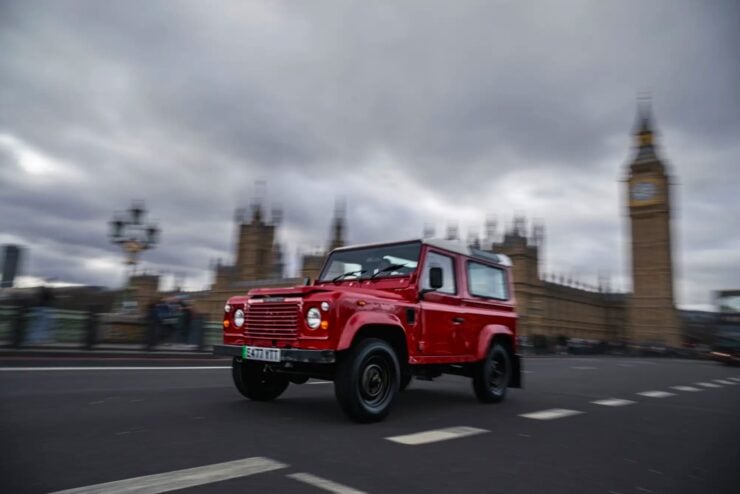

It’s now due to roll across the auction block with Classic Car Auctions on the 23rd of March with a price guide starting at £20,000 or approximately $25,500 USD, which is considerably less than the original conversion cost.
The vehicle comes with current UK registration and an MOT that’s valid until March 2025. If you’d like to read more about it or register to bid you can visit the listing here.
* Editor’s Note: We missed the auction timing on this vehicle by a few days due to a scheduling error. This Land Rover sold for £24,750 which works out to approximately $31,200 USD.
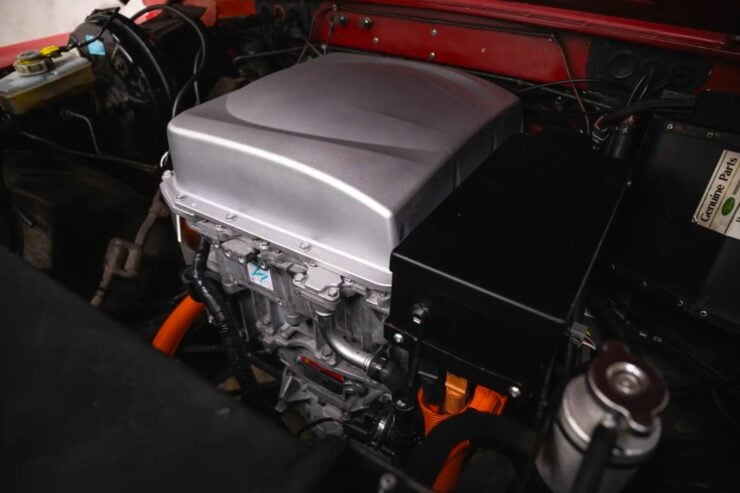
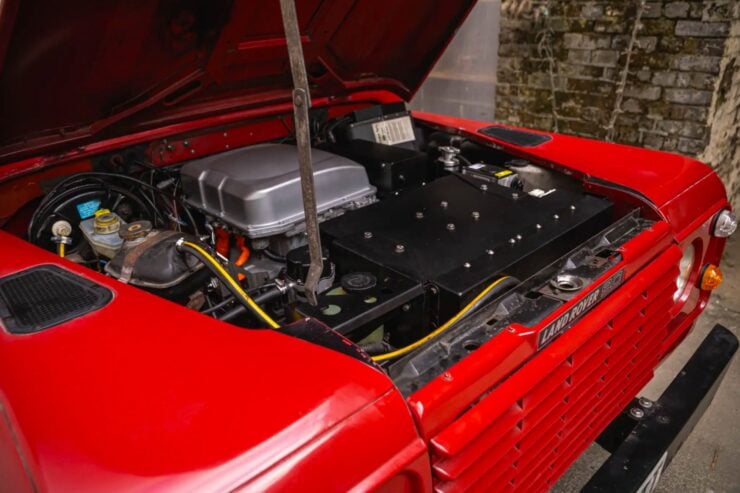
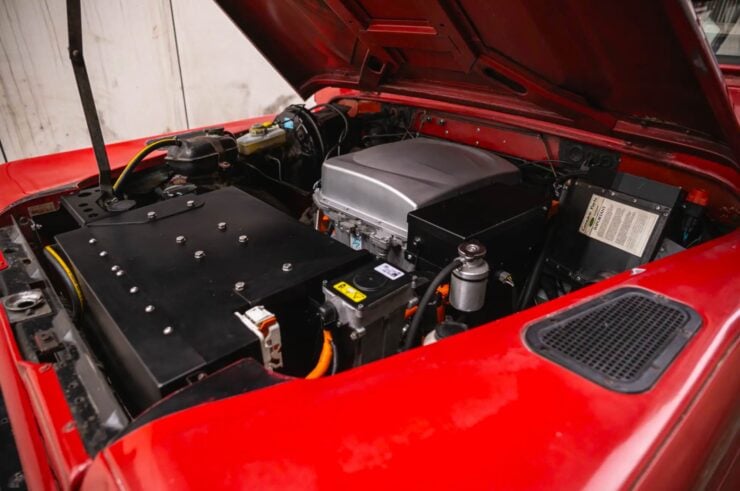
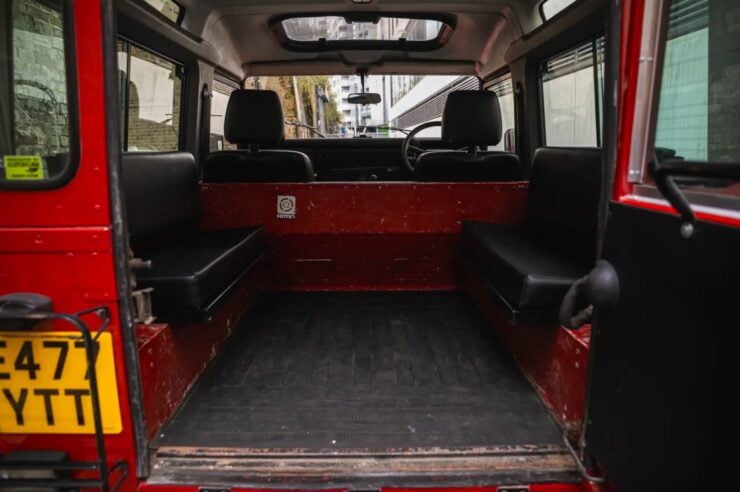

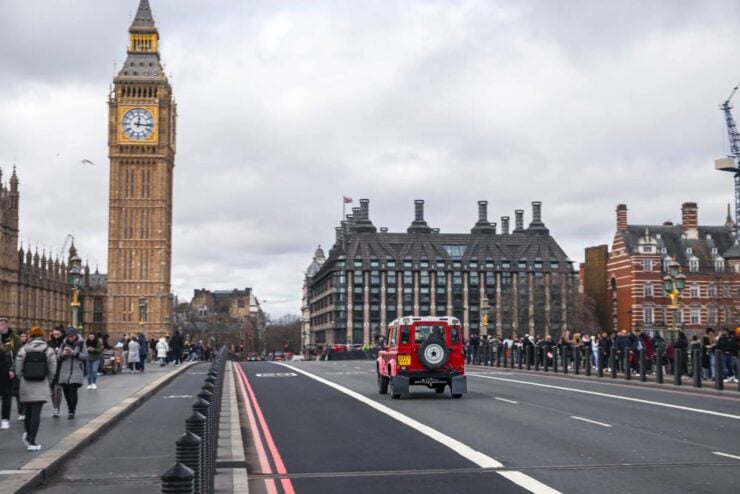
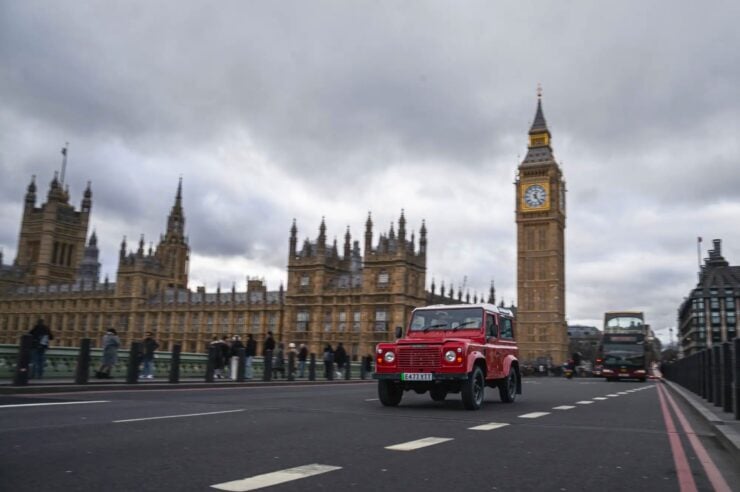
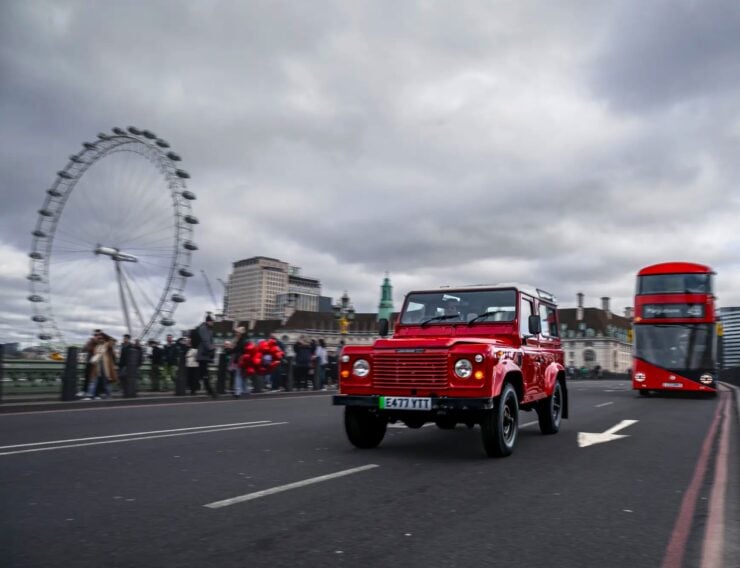
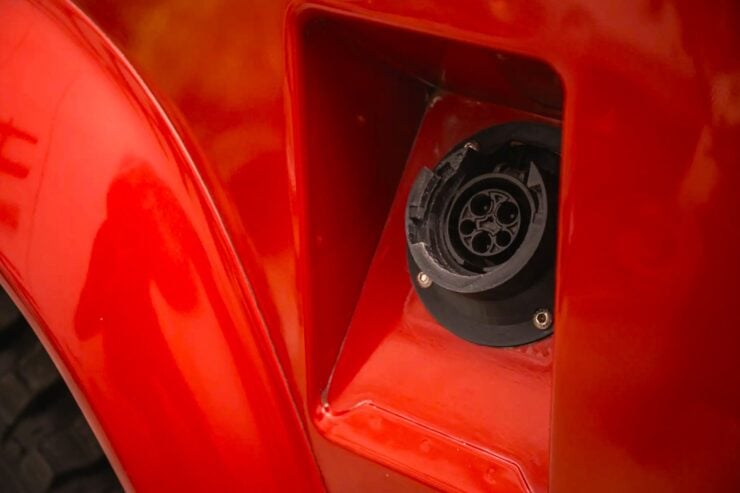
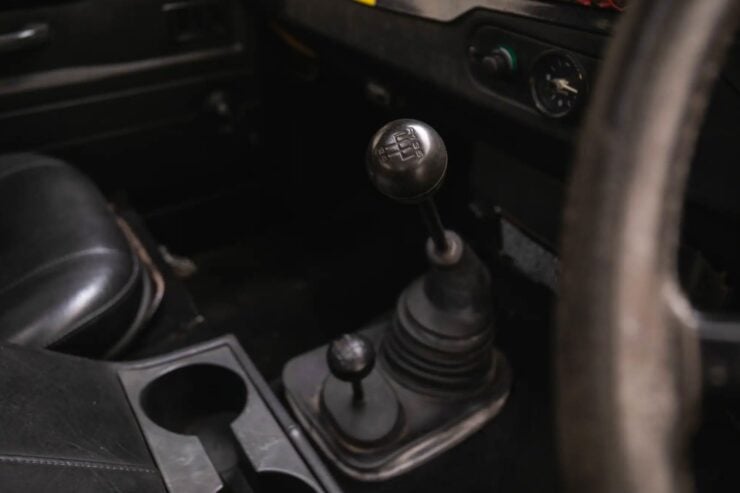

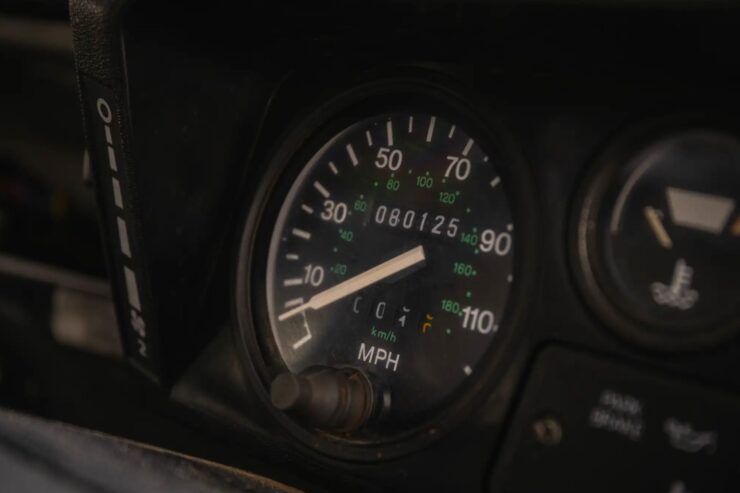


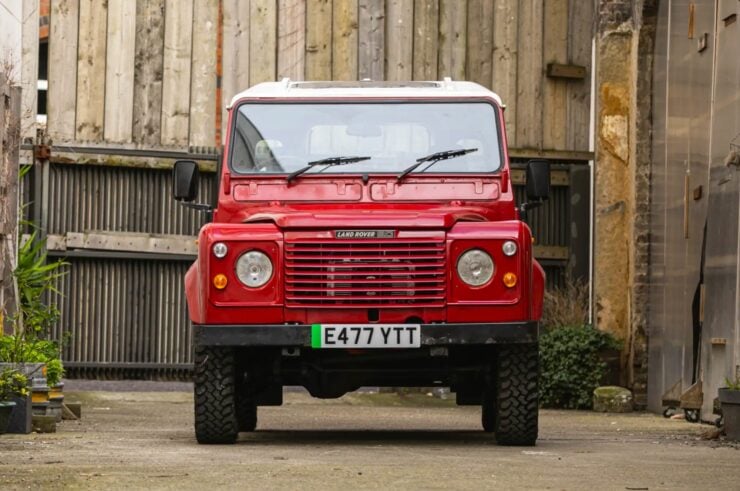
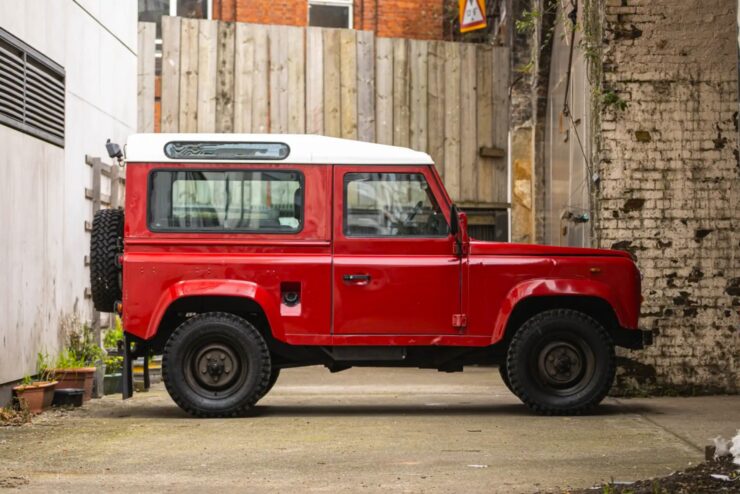

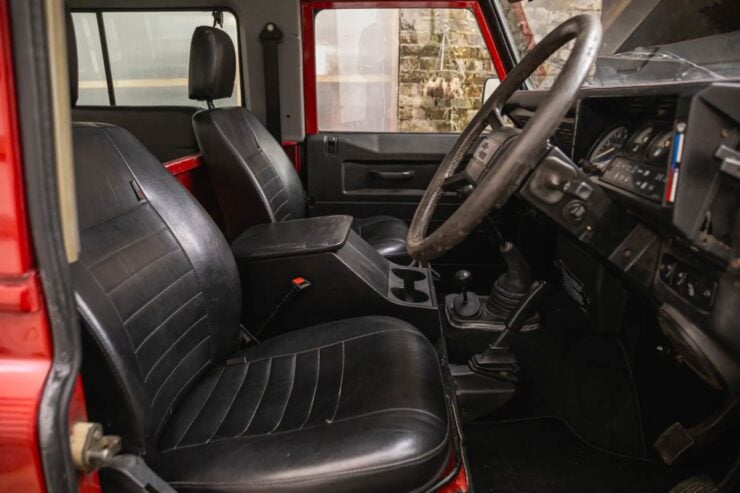
Images courtesy of Classic Car Auctions



